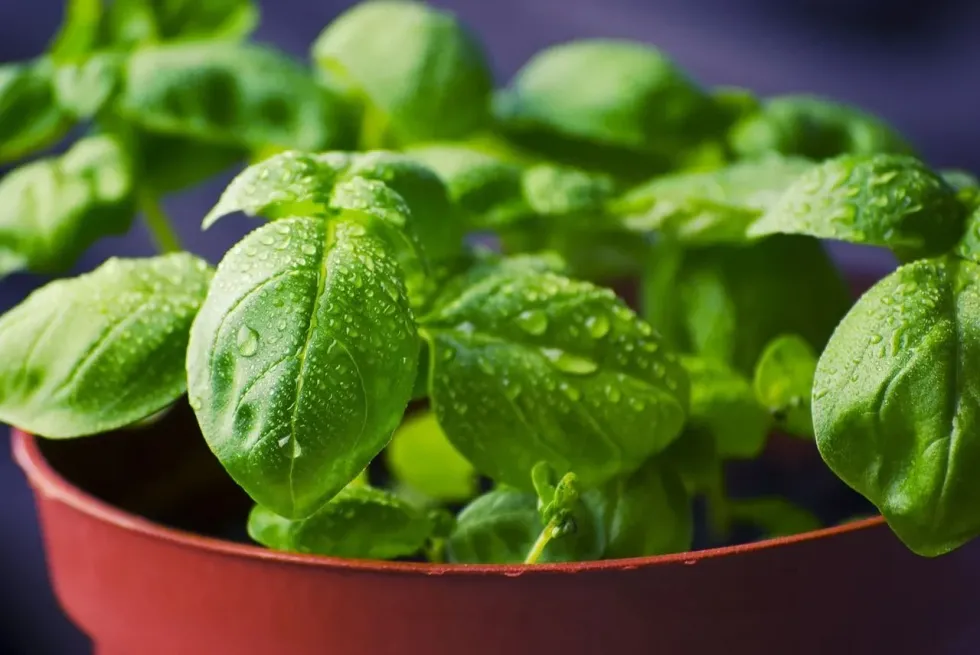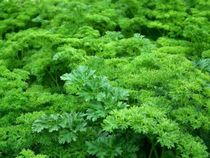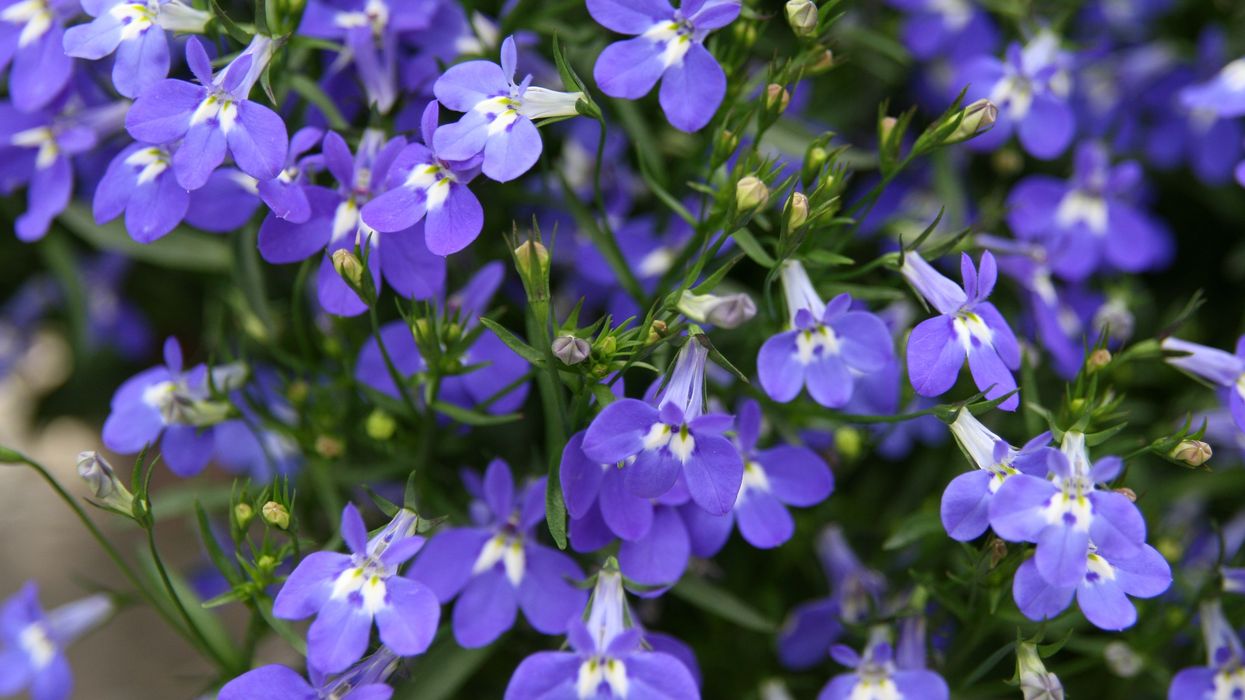Different Types of Herbs That All Chefs Will Absolutely Adore

Do you know that apart from medicinal properties, growing herbs inside your house can be fun too?
Have you cooked meals using fresh herbs and enjoyed the delicious taste and aroma of freshly used herbs inside the kitchen? Here is a list of herbs and some fresh herb facts and types of herbs that can help us maintain our gut health and improve our health.
There are a lot of herbs described in medical science and Ayurveda which help in nourishing our skin internally and externally. The aromatic properties of French herbs, Italian parsley, the bay leaf, and dill plant leaves are commonly used in French cooking.
Dried herbs, tropical herbs, flowering herbs, and perennial herbs can also be used as a herbal remedy.
The spicy flavor and bitter taste due to the dark green leaves of herbs used gives a distinct texture to the dishes of Italian cooking. You can flavor soups with lemon and basil to give a fresh aroma and add medicinal properties.
Some of the most popular herbs used by chefs across the world are lemon basil, coriander leaf, French tarragon, wild marjoram, bay leaves, Italian parsley, flat-leaf parsley, and Mexican oregano. Read on to know more about dried herbs used in different cuisines across the world. Afterwards, also check out can guinea pigs eat parsley and can dogs have parsley.
Herbs To Grow To Help With Dry Skin
Our skin requires nourishment externally and internally. There are some naturally nourishing herbs and plants that help skin look radiant and fresh.
Dry skin often troubles the person because the skin becomes extremely rough and looks wrinkly. There are certain fresh herbs and herbal oils that can be used to manage dull and dry skin.
One of the common skin moisturizing agents is olive oil, scientifically called Olea europaea. Olive oil contains essential nutrients and a naturally occurring element that helps to trap moisture in dry skin.
Olive oil is rich in vitamin E. It helps to soften your skin and prevent the skin from chafing. The antimicrobial properties of olive oil also keep your skin healthy and soothed.
Almond oil is also a skin nourishing agent. The biological name is Prunus amygdalus. Sweet almond oil helps in restoring the moisture content in your skin. This avoids cracks in the skin and also provides relief from irritation, itching, and inflammation which may result from dryness. Almond oil smoothens the skin and makes it glow.
Another herbal oil is grape seed oil, commonly known as Vitis vinifera. This helps the skin to tighten and tone.
Grapeseed is enriched with linoleic acid, which is a fatty acid essential for your skin. It promotes tissue regeneration in your skin and also helps in healing scars faster. Grapeseed oil helps in locking the moisture inside your skin, repairing the growth of tissue, and making skin healthy.
Helianthus annuus, popularly known as sunflower oil, is an excellent source of vitamins A, C, D, and E. This helps skin retain its moisture content and protects skin from bacteria and other harmful irritants.
Cocos nucifera, which popularly known as coconut oil, is an excellent product to help skin look fresh. It creates a thin layer that smooths skin texture and prevents moisture from evaporating. It has proven to delay signs of skin sagging and wrinkles. Additionally, coconut oil also helps in the treatment of diseases like psoriasis, eczema, and dermatitis.
Kokum butter, scientifically known as Garcinia indica, is an excellent provider of fatty acids and vitamin E. This helps in the processing of skin and regenerates cell growth. This keeps the skin elastic and flexible, which prevents skin from drying and cracking up.
Wheat germ oil, scientifically known as Triticum sativum, is rich in vitamin E, which is an effective antioxidant due to its high protein content. It contains vitamins A, B, C, D, and E. Wheat germ oil protects skin from dryness.
This oil is especially used in facial massage to rejuvenate the skin. It has proven to reduce stretch marks and nourish the skin around the eyes. It is a natural facial oil for the skin.
Neem leaves and neem oil are also excellent skin nourishing products. Neem oil acts as a natural protectant and smooths the skin. It improves skin health and prevents harmful bacterial infections like boils, acne, and ulcers, and leaves skin looking healthy.
Herbs To Improve Gut Health And Digestion
With changing lifestyles and multiple food options, we need to take care of our gut health. Major health issues can originate are from a poor digestive system and bad gut health. Using fresh herbs regularly in your cooking can help you fight internal bacterial infections and improve the process of digestion naturally.
Parsley is a fresh herb rich in antibacterial properties. It is recommended to drink parsley tea after your meals to prevent indigestion.
Food experts and researchers have studied that extracts of parsley prevent food matter from sticking inside your stomach and intestines and aid digestion. You can add parsley to your sauces, stews and other dishes. The best way is to add fresh parsley leaves to boiled water and make a healing herbal tea to start your morning.
Another fresh herb used is marjoram which is an ancient peace symbol that definitely keeps your gut happy. It has been used traditionally in the treatment of digestive disorders. French marjoram is enriched with vitamins and minerals.
It blends well if added to salad dressings, soups, vegetables, and eggs. You can also have a marjoram sandwich to ease digestion and you can prepare tea with it. Make sure that you avoid marjoram during pregnancy.
Sage leaves can also be used to fight gastronomic disorders and relieve intestinal spasms. This herb is an aromatic bitter which can be used in cooking and can be added to your tea. Garden sage helps in improving the overall health of your body.
Coriander seeds can also be used in making tea and detoxifying the gut.
Thyme is a fresh herb useful for calming an upset stomach and releasing gas. Thyme can be used in omelettes, marinades, and in stuffing. You can also add thyme to boiling water to avoid bloating after meals.
Next comes oregano which is similar to marjoram. Oregano helps to improve digestion and absorbs the fat inside your gut. Oregano helps in fighting against bacterial infections, worms, and viruses inside your intestines. Oregano can be used to garnish heavy dishes like pizza so that you digest the extra cheese easily. Oregano can also be used to make tea.
Another fresh herb used is holy basil. It has ancient medicinal properties proven in medical science and Ayurveda philosophy. Basil leaves are used to treat illness and indigestion. This herb has aromatic and medicinal properties that relieve you from gas, spasms, and bloating.
Basil also has anti-ulcer properties. It helps increase the stomach mucus which prevents irritation around the stomach lining. Basil can be dried and used fresh to make herbal tea. It can also be combined with ginger and black pepper to combat indigestion.
Peppermint will help to improve the flow of bile and help with digestion. It contains antimicrobial properties to fight against intestinal bacteria.
It is advisable to avoid giving peppermint to kids since this herb relaxes the internal muscles, which then close the food pipe, which allows acid from your stomach to mix with your food pipe. However, peppermint tea can also be prepared to relax your upset stomach. It gives a peppery taste to your meal.

Herbs You Can Find In The Bible
Cumin is a popular flavor in Mexican cuisine. You may be familiar with cumin flavor since it has been popularly used by many past generations.
This herb is an excellent ingredient for taco seasoning and can be used in preparing curry. It adds a distinct flavor if used at the beginning of a recipe. In the Bible, cumin was seen to be grown in many fields. The reference of cumin can be read in Isaiah 28:25.
Cinnamon is also a fresh herb and spice that gives a slightly harsher flavor. This herb is best used with sugar, and people love it in baked foods, on toast, or in tea.
Cinnamon flavor is very common in desserts. In the Bible, it was mentioned to be used as anointing oil in ancient times. The reference can be read in Exodus 30:23.
Turmeric is a natural antiseptic used for both internal and external medicinal purposes. It has been a favorite herb by many and has had proven health benefits for centuries.
Adding turmeric to your daily beverages and food gives medicinal properties and enriches the taste and flavor of the food. In the Bible, turmeric is considered to be a valuable herb. Solomon mentioned this herb to describe his beloved bride in the Song of Solomon 4:14-15.
Aloe is the very first thing that comes to our mind when we are sunburnt. It is a natural cooling agent and relieves us from intense heat and burn marks.
Aloe is becoming popular in many regions because of its unique appearance and healing properties. Aloe has an aesthetic appearance and was brought to Jesus as a gift from Nicodemus.
Bitter herbs are nothing but plants with a little harsh flavor. These include parsley, horseradish, coriander, and horehound.
When Israelites were getting ready for their trip to Exodus from Egypt, instructions on these bitter herbs were given to them. These are mentioned in Exodus 12:8 in the Bible. During Passover, you can get an actual taste of history by using these bitter herbs in your cooking meals.
Anise is another example of a fresh herb. Anise has a similar flavor to black licorice.
It is found in foliage and white blooms. It is easy to grow inside your garden and it brings in a strong flavor, and can make your garden aromatic. Anise was mentioned in Matthew 23:23, where it was used as a food seasoning and in tithing.
Cassia is a commonly found herb in China and southeast Asia. It has a similar flavor to cinnamon. It is also known as Chinese cinnamon. This herb is used to make oils and has a heritage. The reference to cassia was given in Ezekiel 227:19 when trade was discussed between nations.
Flax seeds, which are now a common ingredient for salad and smoothies, are rich in fiber. Flax resembles a wildflower and has green foliage. It is used in a variety of recipes. People relied heavily on this herb, and the references of flax were given in Exodus 9:31, Isaiah 19:9, Joshua 2:6, and so on.
Milk thistle is extremely helpful in maintaining our health. In spite of its spiky appearance and prickly outlook, it is mentioned in Genesis 3:18 when the curse on the land was discussed by God.
Mint is another popular fresh herb that might become invasive if planted in mini containers. Mint flavor is popular in many cuisines, and the flavor is loved by tea lovers. There are around 600 varieties of mint, out of which some of the most popular are peppermint, spearmint and chocolate mint.
Dill is famous for making dill pickles and is used in a lot of culinary recipes. It makes for a refreshing indoor herb and cools the temperature. The Bible mentions these herbs - dill and mint - along with others in the verse Matthew 23:23.
Types Of Herb Gardens
Based upon the usage of herbs, there are different types of herb gardens. A culinary herb garden can be the easiest to maintain and great to explore for beginners. Herbs grow in abundance, and some of them need to be replanted every year.
Culinary herb gardens can be planted near your door, especially the kitchen door, so that you can quickly pluck some fresh leaves and season your foods without the need to store the herbs.
Some herbs that can be used in regular cooking and can be grown at home for fresh use are oregano, coriander leaves, thyme, bay leaves, chives, Mexican parsley, Thai basil, purple basil, cilantro, sweet basil, rosemary, marjoram, parsley, dill, garden sage, and mint.
Another type of herb garden is for growing herbs that help keep colds and flus at bay. Viral infections are common in households where kids go out to play, and herbs are helpful in providing ailments.
Having naturally growing herbs in your own garden can inspire you to use them regularly and stay healthy throughout the year.
These herbs also keep symptoms of flus and colds at bay whenever viral infections are around. Herbs that can be included are yarrow, thyme, peppermint, echinacea, elderberry, garlic, bay leaves, holy basil, lemon balm, and boneset licorice.
Another interesting way to teach your children and introduce them to the herbal world is to let your children plant and grow their own herb garden. Many herbs are safe for children and can make learning fun and help them develop an interest in gardening.
Herbs for children include chamomile, violet, marshmallow, Thai basil, Mexican parsley, lavender, lemon balm, coriander seeds, spearmint, elderberry, catnip, and fennel.
How do you store herbs to use later?
Sometimes it is not possible to grow fresh herbs in every household. The next best way is to buy fresh herbs from the store and then store them.
First, trim their stems off. Then take a tall glass filled with cool water and place the herbs inside the glass. Just like with your flowers, make sure you change the water regularly.
You can also store herbs in the refrigerator by covering them with a reusable bag. Make sure that you don't keep them open as they may lose oxygen. Hard herbs which require more care and moisture can be wrapped in a wet towel or a damp cloth.
This will keep the herbs fresh. You can also freeze the herbs.
Basil, mint, lemon balm, and oregano can be stored by freezing them in an airtight container. These kinds of frozen herbs can easily last up to 12 months. You can also freeze them inside ice cubes and then can use fresh herbs whenever you want by melting the ice cube.
Here at Kidadl, we have carefully created lots of interesting family-friendly facts for everyone to enjoy! If you liked our suggestions for different types of herbs then why not take a look at can rabbits eat parsley or are ferns toxic to dogs.
We Want Your Photos!
More for You
See All
Bachelor of Science specializing in Human Anatomy

Joan AgieBachelor of Science specializing in Human Anatomy
With 3+ years of research and content writing experience across several niches, especially on education, technology, and business topics. Joan holds a Bachelor’s degree in Human Anatomy from the Federal University of Technology, Akure, Nigeria, and has worked as a researcher and writer for organizations across Nigeria, the US, the UK, and Germany. Joan enjoys meditation, watching movies, and learning new languages in her free time.
Disclaimer
1) Kidadl is independent and to make our service free to you the reader we are supported by advertising. We hope you love our recommendations for products and services! What we suggest is selected independently by the Kidadl team. If you purchase using the Buy Now button we may earn a small commission. This does not influence our choices. Prices are correct and items are available at the time the article was published but we cannot guarantee that on the time of reading. Please note that Kidadl is a participant in the Amazon Services LLC Associates Program, an affiliate advertising program designed to provide a means for sites to earn advertising fees by advertising and linking to Amazon. We also link to other websites, but are not responsible for their content.
2) At Kidadl, we strive to recommend the very best activities and events. We will always aim to give you accurate information at the date of publication - however, information does change, so it’s important you do your own research, double-check and make the decision that is right for your family. We recognise that not all activities and ideas are appropriate for all children and families or in all circumstances. Our recommended activities are based on age but these are a guide. We recommend that these ideas are used as inspiration, that ideas are undertaken with appropriate adult supervision, and that each adult uses their own discretion and knowledge of their children to consider the safety and suitability. Kidadl cannot accept liability for the execution of these ideas, and parental supervision is advised at all times, as safety is paramount. Anyone using the information provided by Kidadl does so at their own risk and we can not accept liability if things go wrong.
3) Because we are an educational resource, we have quotes and facts about a range of historical and modern figures. We do not endorse the actions of or rhetoric of all the people included in these collections, but we think they are important for growing minds to learn about under the guidance of parents or guardians.







